- Home
- slideshows
- miscellaneous
- How to negotiate a good deal on a new car
How to negotiate a good deal on a new car
Get to know your car dealer.

Don't forget that buying a car is all about salesmanship.
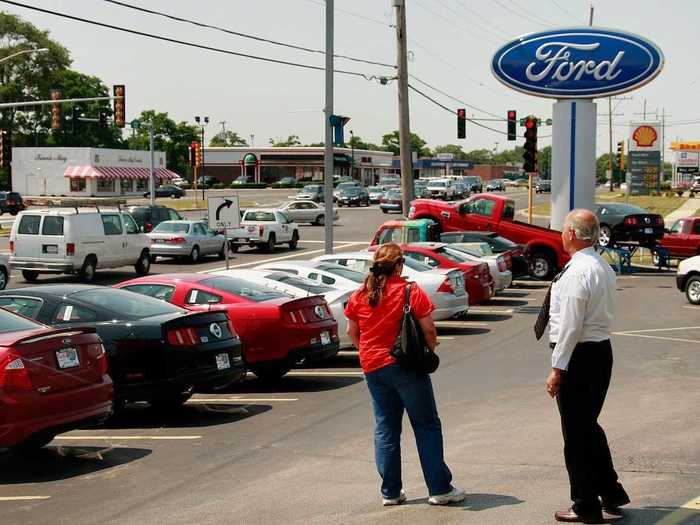
Lots of people are intimidated by car dealerships and the whole car-buying experience. There are some alternatives to the traditional approach, such as Costco's program of set prices and various online presales processes. But in almost all cases, you're still going to have to visit a dealership, to deal with financing, insurance, and to take delivery of your car.
Don't have any illusions here: you're entering a sales relationship. The car dealer wants to sell you a car. The sooner you get comfortable with that, the better the process will go for you. Salespersons have different personalities. Some go easy, some come on strong, and some are in the middle.
But they all have the same end goal, and they want you to be happy with the car you buy. But they aren't selling you just a car. They can also sell car loans, insurance, and service contracts, as well as aftermarket features.
My advice is to prepare for the sell-job and prepare yourself psychologically for the fact that you need the salesperson and the salesperson needs you. Yes, it's stressful to spend $30-40,000 on something, even if you're one of the few buyers who pays all cash. But if you come to the process with the understanding that you have much of the power in the relationship, you'll be happier.
Don't be afraid to walk away.
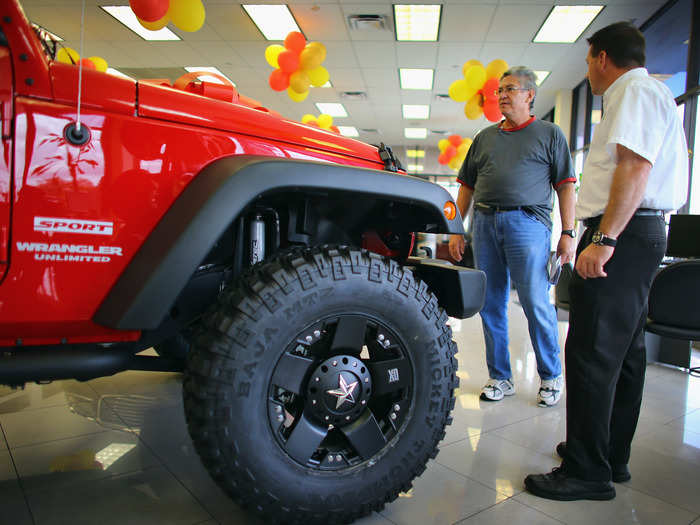
Another personal anecdote: Years ago, I went car shopping. I knew what I wanted, and I had my budget in mind.
I found a vehicle at a dealership, dropped by, talked to the salesperson, discussed price — and said I had to think about it.
The price wasn't a sticking point, but the dealer wanted to bit more than I was willing to pay.
So I went home. That night, the salesman emailed me, said he and his manager had talked about my offer, and had decided to meet my offer.
The lesson here is that if you want a good deal on a new car, you have to be willing to walk away. You won't always hear back from the dealership, but you should much of the time. Car dealers believe that if a person comes in with the intention to buy a new car, then that person should not leave without a fresh set of wheels.
Get pre-approved for an auto loan.

Financing a new car, even if your credit isn't great, shouldn't be a problem. You can simply do it at the dealership, but you're likely to get a better deal if you prearrange the financing with a bank you routinely do business with.
Basically, you can go through a simple pre-approval process online, get approved for a loan range, and then take that documentation to the dealership and tell them that's how you'd like to complete the transaction.
The dealership may then try to beat your deal, at which point you can decide if you want to stick with your bank or go with the dealer's option. To be honest, there isn't much difference as far as the service goes, but the interest rates can vary, and the dealer might be able to get a zero-money-down loan, if they have access to those offers.
Know what you want before visiting the dealership — exactly what you want.
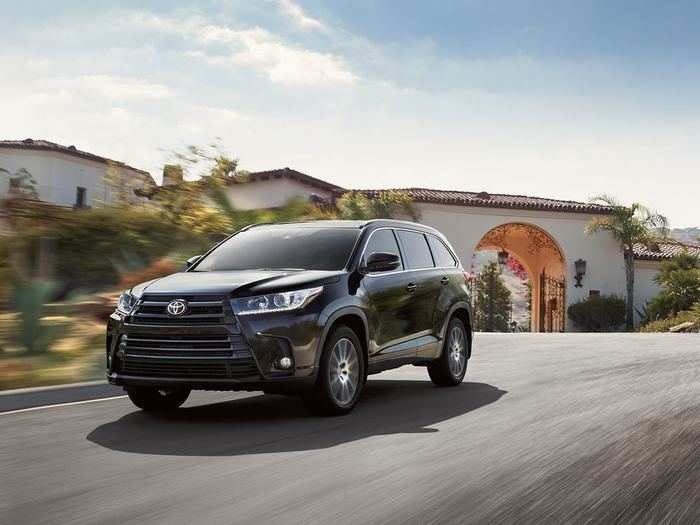
There's nothing wrong with going to the dealership as a blank slate and asking the salesperson to just show you some cars.
But these days, with vast amounts of new-car information available online, dealers expect customers to come in having done their homework.
Americans usually buy their new cars out of available dealer inventory, so the one of the few ways to throw a dealer for a loop is to want something obscure or specific, in which case you might require a special order.
For the rest of us, if you head over to Joe Local Smalltown Toyota with designs on a 2019 Highlander Limited, but you don't want to spend more than $40,ooo and have a four-year-old vehicle with normal mileage that's been well-maintained to trade in, chances are there will be something for you to test drive. If not, then Joe Local Smalltown Toyota can arrange to have a vehicle sent to the dealership.
It helps to know what you want at the level of color, wheels, interior, and so on. But the trim-level is the bare minimum.
Knowing exactly what you want is something of a defense against an upsell. The Highlander Limited Platinum is just a few grand more than the Limited, but the dealer may have one if they lack a Limited. If you're financing, the extra cost can kind of disappear. But if you know what you want, you can avoid busting your budget in the heat of the moment.
But don't be completely inflexible.
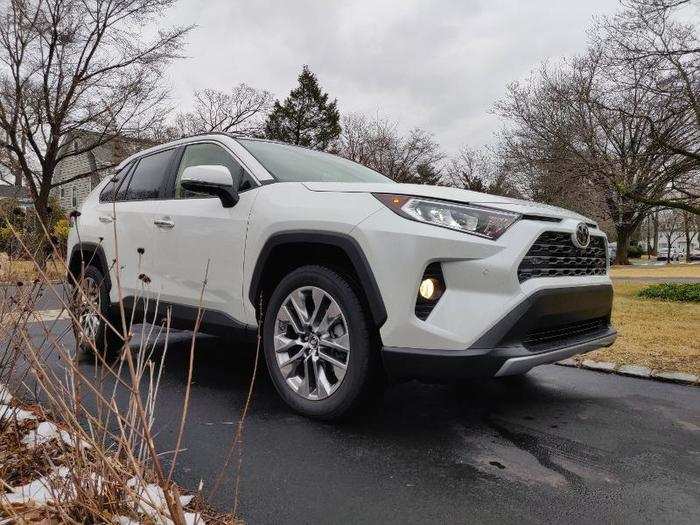
Of course, you might genuinely like the Highlander Limited Platinum more than the Limited. In which case, you can consider the intangibles of ownership and up your budget on the spot.
You might also think you want a three-row SUV when a two-row crossover would actually meet your needs better — and cost less! In which case, the Toyota RAV4 that Joe Local Smalltown Toyota wants to show you or that are on his lot could be worth a look.
Read our 2019 Toyota RAV4 review here »Don't trade in your old car if you want to maximize your money.

The dealership is never going to give you as much on a trade-in as you'd be able to get from selling your old car privately.
The dealership will, however, take your old car, knock some cost off your new car, and take care of all the paperwork for you.
Personally, I prefer to let the dealership do the work. But if I wanted potentially hundreds or even thousands of dollars more, I'd sell the car myself.
Play the market.

Back to Joe Local Smalltown Toyota for a minute. Not far away, there's Beth Bigtime Tri-State Toyota, and Beth looks like she has some appealing offers on Highlanders.
Joe and Beth probably know each other, so if you let them both know you want to buy a new SUV, you can sit back and let them bid against each other. Beth might have better pricing power, but Joe might be able to get you better financing terms through a bank he works with all the time. He might also throw in a year's worth of free oil changes.
The new car market is ... a market! Treat it as such!
Pick your time of year to buy — wisely.

The old wisdom is that the best time to buy is at the end of the year, when dealerships are trying to clear their lots to make room for new inventory.
There's something to that — automakers want to max-out their annual sales and might provide more incentives as the year closes out, providing dealers some sales support.
But I like to say that there's never a bad time to buy a new car. Seasonality can work in your favor. The first part of the year can be sort of slow, especially if the weather in your region is bad.
Sales usually heat up in spring and summer, but sometimes automakers and dealers are too optimistic about new models and end up stuck with sluggishly selling vehicles. These cars might be worth a look.
Dealerships might also have models that haven't been redesigned or refreshed in a while and no longer have much buzz around them. You could secure a great price on a Prius from Joe Local Smalltown Toyota, given that the current Prius has been around for a while and has been declining sales-wise.
Follow the offers.
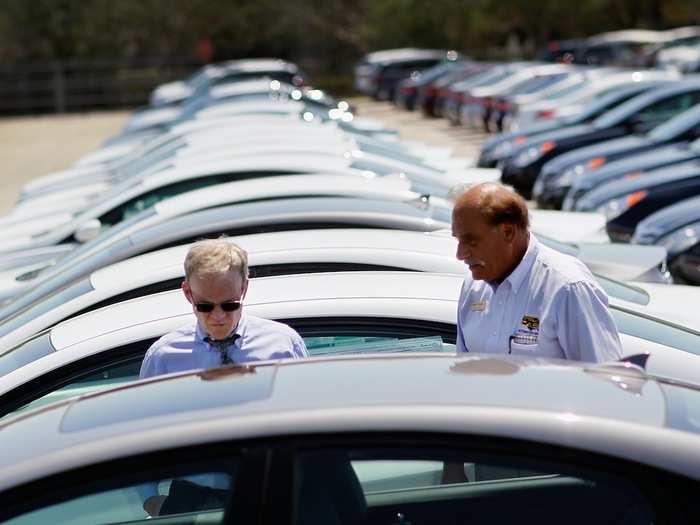
The dealer you bought your car from will certainly market services and new vehicles to you as often as possible.
Take them seriously! This is your first shot at a good deal.
You'll also see national advertising from automakers throughout the year, as well as regional, state, and local offers. Clearly, if you've just bought a new car, you can ignore all this. But once you've owned your vehicle for a few years, you might want to pay closer attention.
Plus, it's a good idea to keep track of the overall economic situation. Interest rates, for example, have been ticking up, but if some recession warnings start to flash more urgently, rates could drop. At which point you might want to think about buying again.
Don't be afraid of long-term loans.

There's been a lot of noise about stretched-out loan terms. If five-year terms were what you were used to, you might now see loans as long as seven years on offer.
Automakers, financing outfits, and dealerships are using longer-term loans to enable customers to afford more expensive vehicles. But they're also using them to give customers a monthly payment that works for them.
When you get right down to it, your monthly payment is what matters most, as long as you're buying within your budget. So work from that number, rather than deciding that there's no way, no how you'd ever flip for a longer-term loan.
If you can't get comfortable with paying the extra interest, you could always insist on a "normal" loan. And even if you do go for the longer term, if you intend to keep the new car for five years, refinancing is always a later option.
Popular Right Now
Popular Keywords
Advertisement